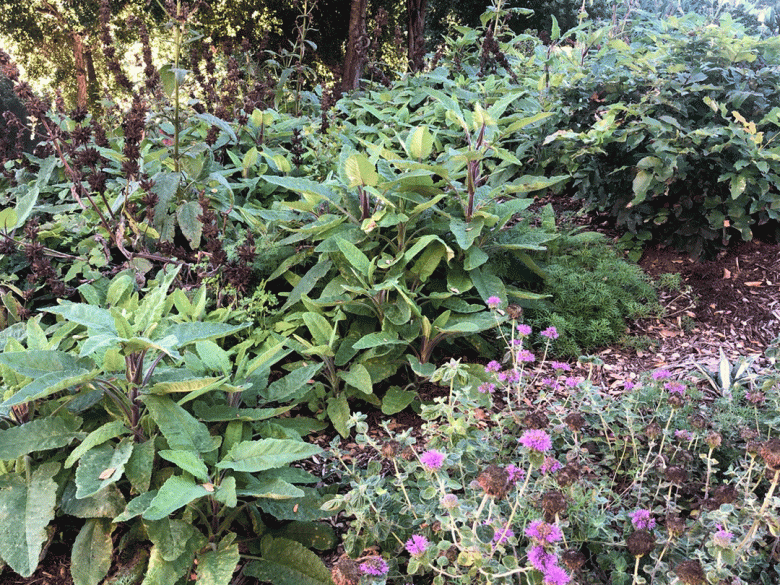
by Karen Telleen-Lawton, Noozhawk Columnist, Read the original column at Noozhawk.com
Our garden grows citrus fruit (native to Southeast Asia) and plenty of incorrigible European weeds like fennel, to which we’ve surrendered. Mostly, though, in the two decades-plus we’ve lived in Rattlesnake Canyon, we’ve transitioned to native California species.

Each fall I visit the Santa Barbara Botanic Garden’s annual plant sale to fill my goody cart. The wagon holds my plant purchases and grand ideas to fill in landscaping holes or try out new species.
My husband and I are in our happy place in our garden. We are not averse to pausing in our weeding to posit an idea or listen to a bird. We are enthusiastic but not fastidious gardeners with a “sink-or-swim” philosophy. The first year we nurse them with extra water and TLC (unless we forget) and then they’re mostly on their own.
The garden teaches me. Over the years, I’ve found the most success by dividing and transplanting specimens that have already shown themselves to thrive in our yard. Despite thousands of hours working in the garden, though, it still has a rugged look. At least until this year.
Native plants are touted as requiring little water, but they lavishly soaked in the forty-three inches of rain we got this season. California natives like red buckwheat, which I planted and neglected over the last two decades, reincarnated in our garden.
Rattlesnake Canyon natives like sumac, honeysuckle, and snowberry now carpet our slopes as if designed by a landscape architect or Mother Nature herself.
Take hummingbird sage (Saliva spathacea). In the early 2000s, this squat basal plant with scarlet flower stalks grew in a patch under oaks in our east canyon. A few years ago I transplanted some specimens to other areas, including a few under an oak on a slope outside the kitchen window.
This year, the half dozen outplantings exploded to 20 or 25 healthy plants, competing for space with coyote mints (Monardella villosa).
The coyote mints, speckled in spring and summer with small purple flower balls, had grown only begrudgingly in the decade since I added them. This year they have tripled in size and spawned dozens of new volunteers. I will transplant some of these to new homes around the yard when the first rains arrive.
I have cherished a few diminutive blue-eyed grass volunteers (Sisyrinchium sp.) that pop up each spring outside a bedroom window. I didn’t remember planting them and wondered whether they might be native to the canyon. This year these dainty perennials emerged in so many areas that I’ve decided they must have been in the seed bank since time immemorial, waiting for the rains of 2023.
I’m less sure about the Farewell-to-Spring (Clarkia spp.) and Monkeyflower (Scrophularia spp.), which have also appeared in relative abundance for the first time. These wildflowers blossomed around the perimeter of the house.
I recall occasionally tossing native wildflower seed when the seed packets were a party favor. This is the first year I’ve witnessed a bounty harvest for my broadcasting.
Perhaps my most amazing find is a new elderberry. I’d always admired these attractive large shrubs for their creamy blossoms and handsome dark berries.
A couple of months ago I glanced over at a scrawny pear tree which, years before, I’d banished outside the drip system line for non-production. Growing out of the same spot as the pear, stalks touching, is a healthy elderberry shrub.
Now I’ll finally get to try brewing elderberry wine.
Prolific rain years and devastating droughts will continue to come and go. Climate disruption is changing the rain cycles: more rain in shorter periods paired with longer droughts. Our garden will sport a different appearance depending on the rain year, but the history of the land is in the seed.

Karen Telleen-Lawton, Noozhawk Columnist
Karen Telleen-Lawton is an eco-writer, sharing information and insights about economics and ecology, finances and the environment. Having recently retired from financial planning and advising, she spends more time exploring the outdoors — and reading and writing about it. The opinions expressed are her own.

